A common question we receive at 48 Hour Books is, “What kind of paper do you recommend?” The answer depends on the type of book you’re printing, its functionality, as well as your own personal preference.
To help eliminate the guesswork that comes with choosing a paper type, we decided to test different writing utensils on each paper option to help you decide what’s right for your book.
The Utensils
For our little comparison experiment, we wrote on each paper type with the following:
.
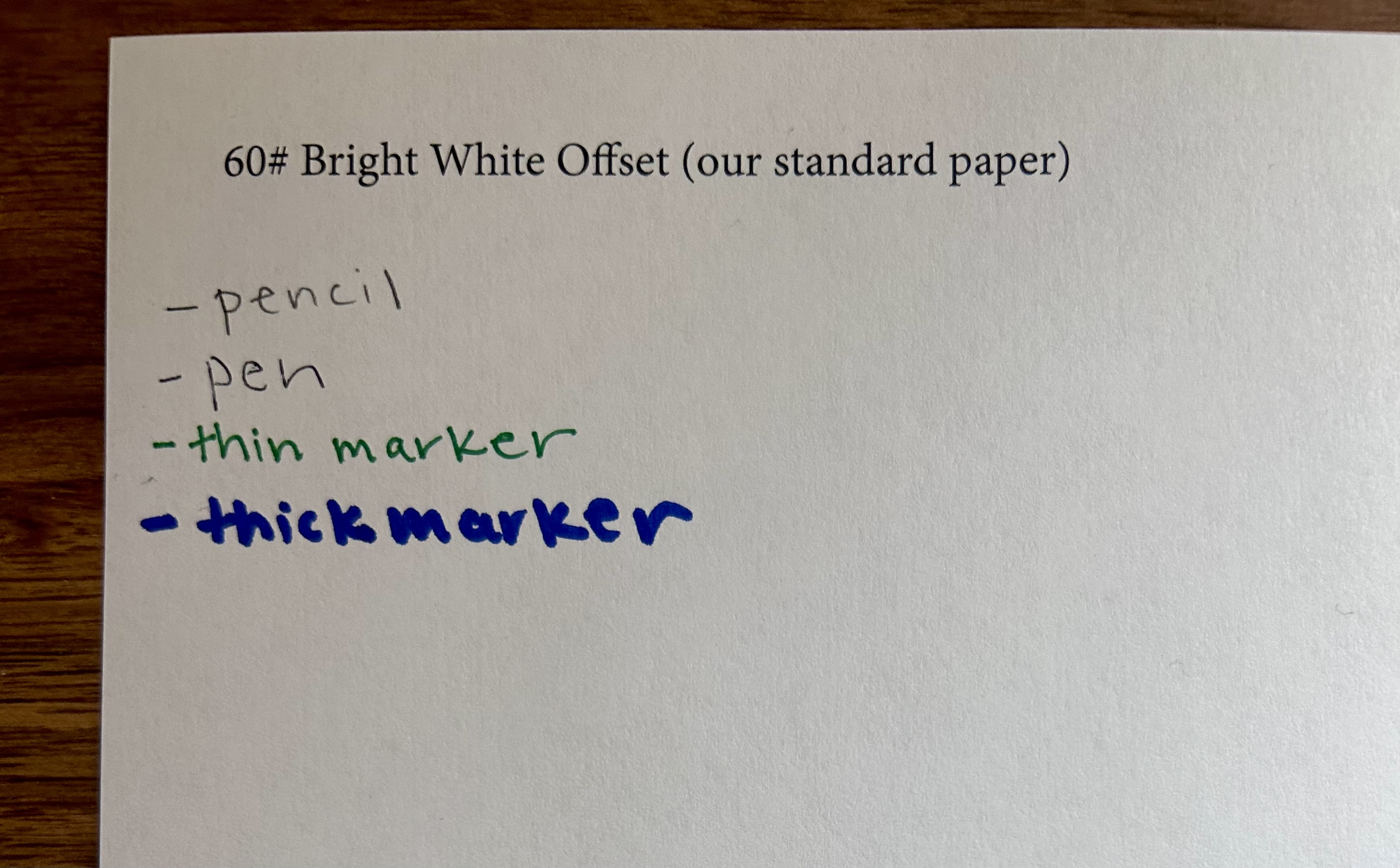
The Paper
Below, we will outline each paper type and share what we discovered using each writing utensil. We will also provide recommendations for which paper type is appropriate for different book styles and genres.
Uncoated Paper Types
An offset paper works well with nearly any book and any binding method. Offset paper is the best option for workbooks, journals, planners, and coloring books, since the ink won’t smudge easily.
60# White & Cream Offset
Many printers use 50# (lb.) offset, which is similar to typical printer paper. Our standard paper is thicker, more durable and has a bright white finish. We also offer 60# offset paper in cream if you'd like your book to have a slightly warmer look.
If you are looking to print a standard book with no color pages, we recommend our 60# white or cream offset paper. This is our most popular paper option.
The Utensil Test
As you can see, when you turn the 60# paper over, the pen and pencil do not show through. You can see the thin marker bleed through, but very subtly. The thick marker can be seen the most. If you are looking to print a book that is intended to be written in or colored in, our standard 60# paper makes for a great economical option.
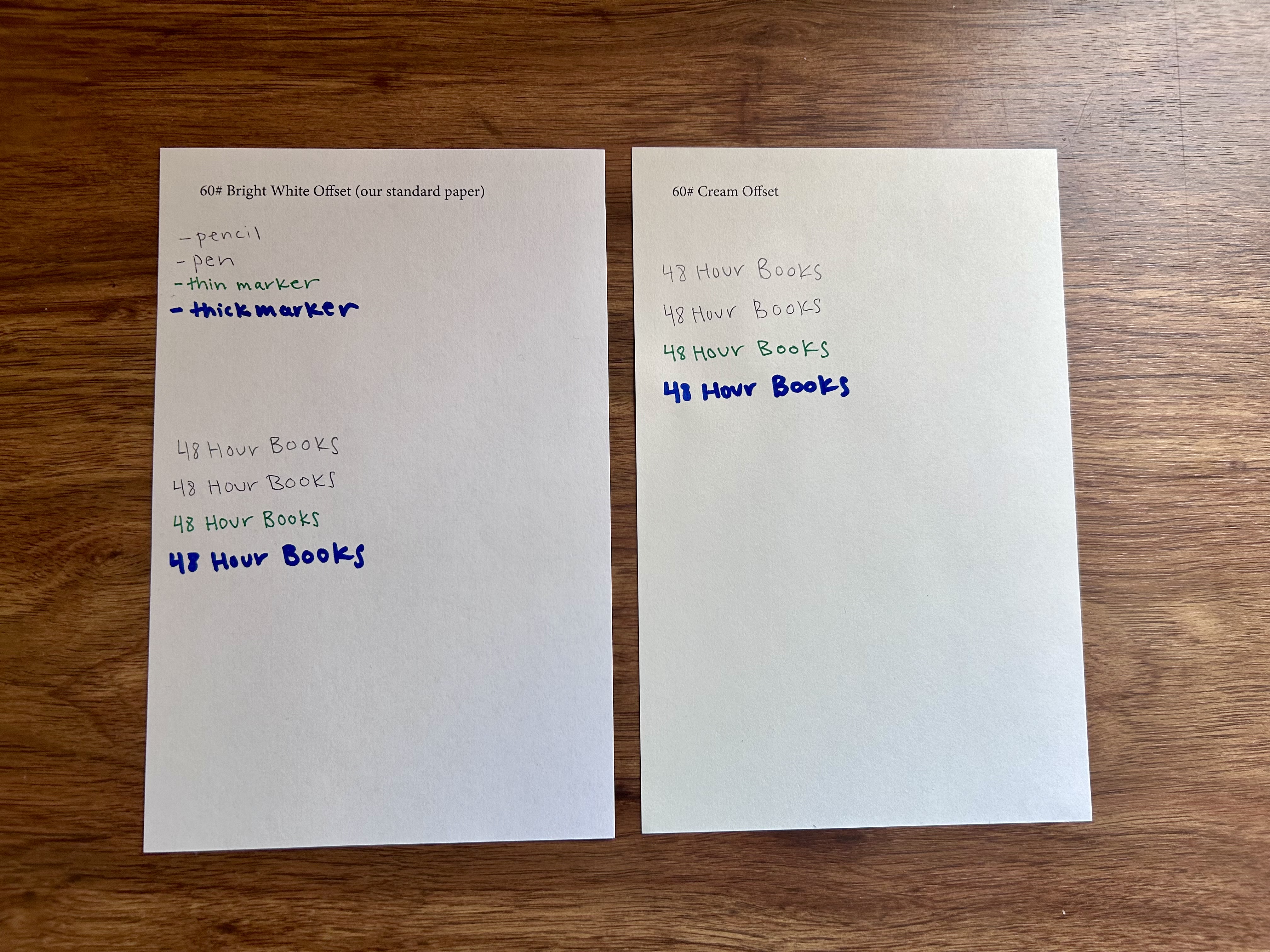
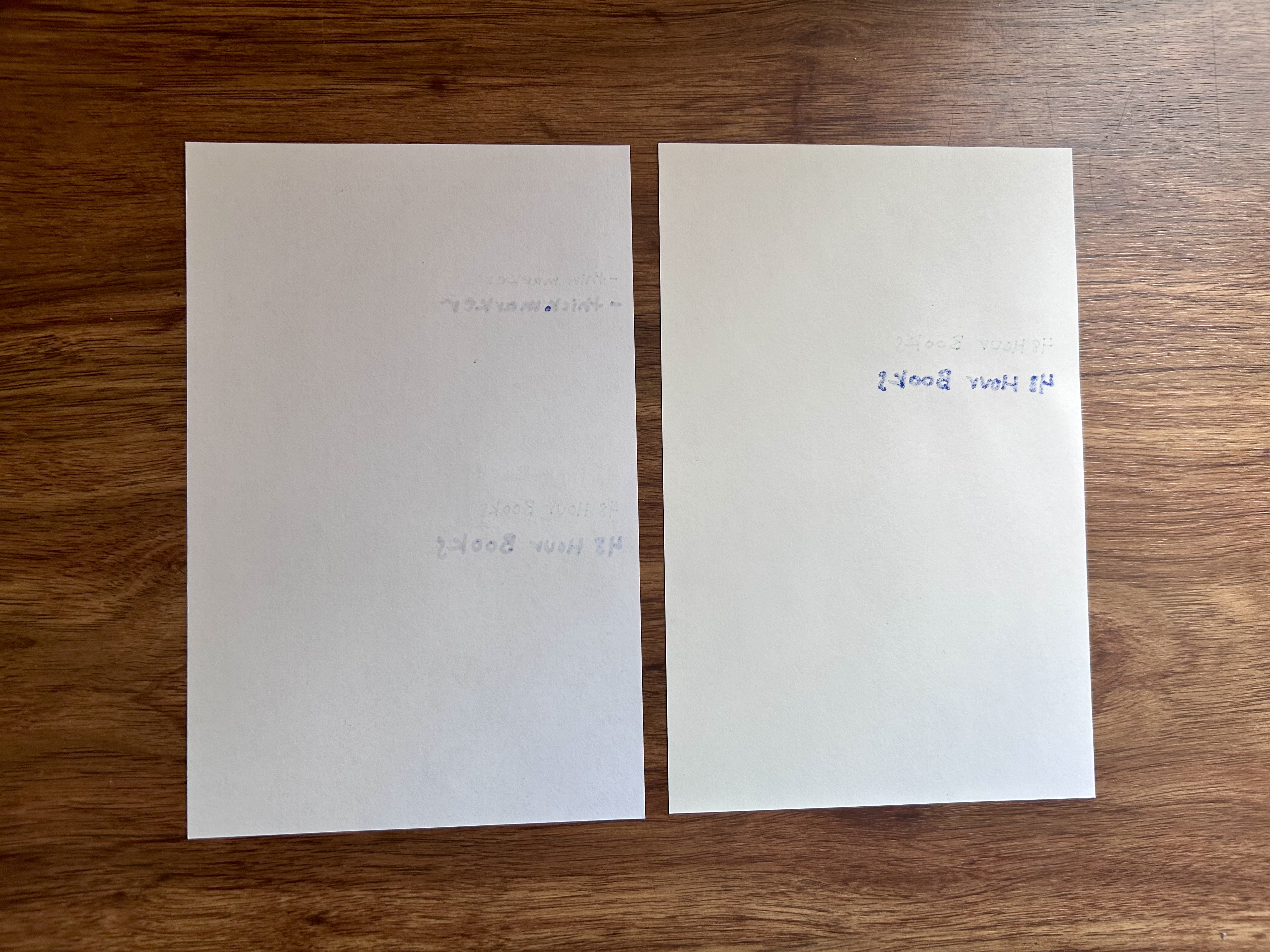
70# White & Cream Offset
While our standard paper is quite durable, if you're looking for a slightly heavier page (or perhaps you'd like your book to be a bit thicker), 70# offset is a great choice. It's roughly 15% heavier than our standard paper and is available in both bright white and cream.
The Utensil Test
Since 70# paper is only slightly thicker than our standard 60# paper the results were comparable, but marginally better. Like the 60# paper, the thick marker can be seen on the back the most. Another variable to keep in mind when deciding on your paper of choice is binding type. If you are printing a coil-bound book, for example, you may want a slightly thicker paper for ease of page turning for something like a coloring book.


80# Bright White Offset
For books with large graphics or printed page backgrounds, 80# offset is perfect. At approximately 25% thicker than our standard paper, this stock will help prevent extra ink from showing through to the other side of the page.
The Utensil Test
Compared to the 60# and 70# paper, the 80# offset rendered better results with the thick marker. Aesthetically, if you want less bleeding, then this is the paper type for you.

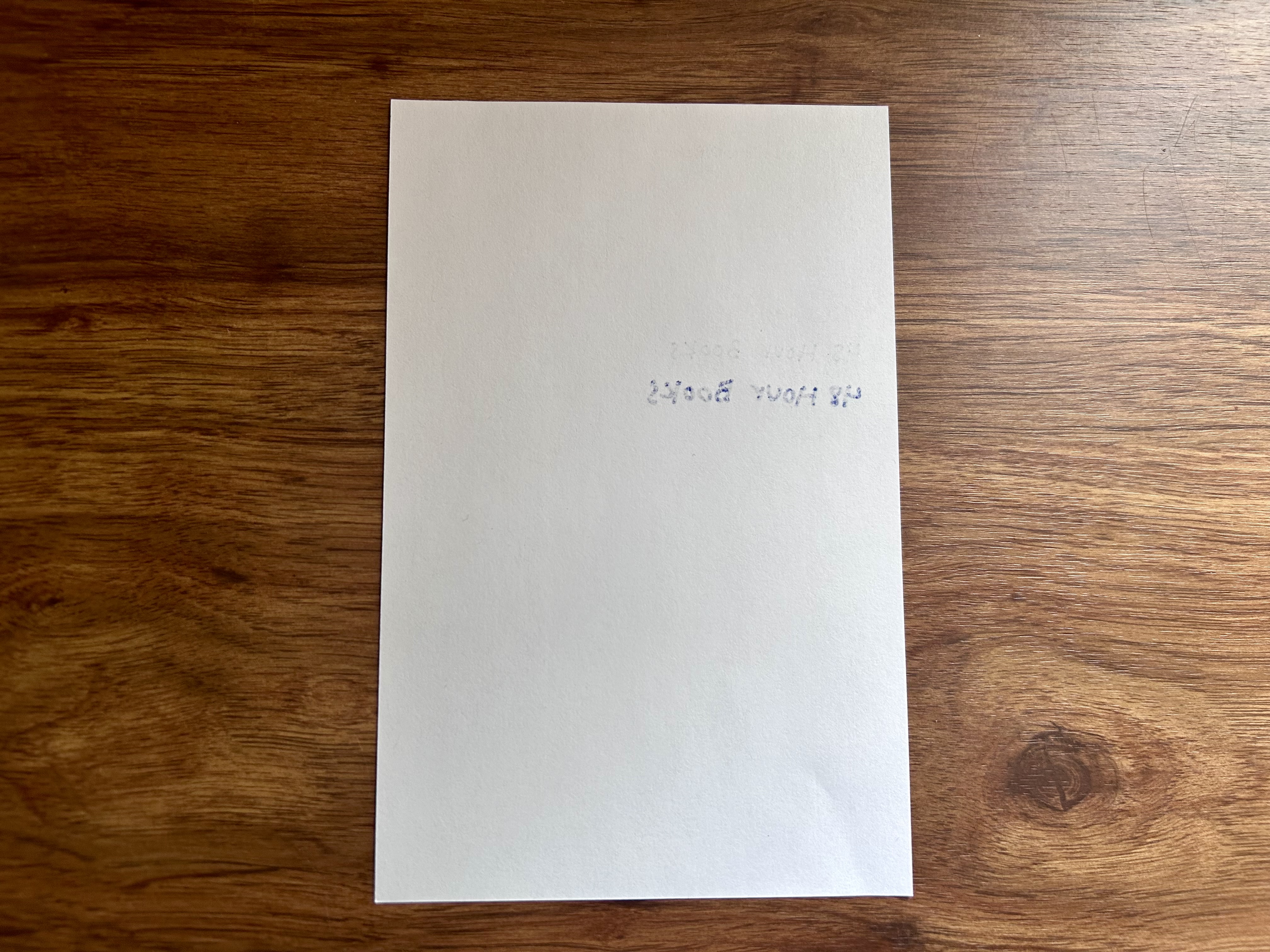
**Formatting tip: If you are printing a coloring book, it may be beneficial to format your one-sided, so the pages intended to be written or colored on can be torn out. This also makes it so that any utensil transfer on the back side isn’t a factor.
Coated Paper Types
A coated paper provides high image intensity, which is ideal for books with photos and pictures. Our coated paper comes in gloss and silk. Silk has a low-gloss sheen that highlights images but isn’t too harsh for reading text. For books that are heavy on pictures and low on text, a gloss sheet works best. Cookbooks are often printed with coated stock, since the kitchen environment can result in the need for a paper surface that can be wiped clean. Art books and photography books are best printed with coated paper to really showcase the quality and vibrancy of the colors on the page. We do not recommend coated paper types for books that are intended for writing utensil use.
80# Satin (matte) & Gloss Text
Our 80 lb. coated papers are our favorites to recommend for books with photos or artwork. Both the 80# gloss and 80# silk give you beautiful contrast and finish without making your book heavy and cumbersome to flip through.
The Utensil Test
As suspected, testing each utensil showed different results from our uncoated paper types. In terms of ease of use, it was much more difficult to write with each utensil, especially with the pencil. The pencil appeared more faint and required a heavier hand.
When testing the markers, I intentionally ran a finger over the words to show how it can easily smear directly after writing. The good news is, that after the ink dried, the smearing stopped. So, if you want to print your book with coated paper and need to write a memo or sign an autograph, as long as you wait for the marker to dry, you can still successfully write on coated paper.
When turning the paper over, there is less bleeding on the back, but this is simply owed to the paper being a thicker stock. We still highly recommend going with our 80# Bright White Offset paper for a thick paper that can be written on.
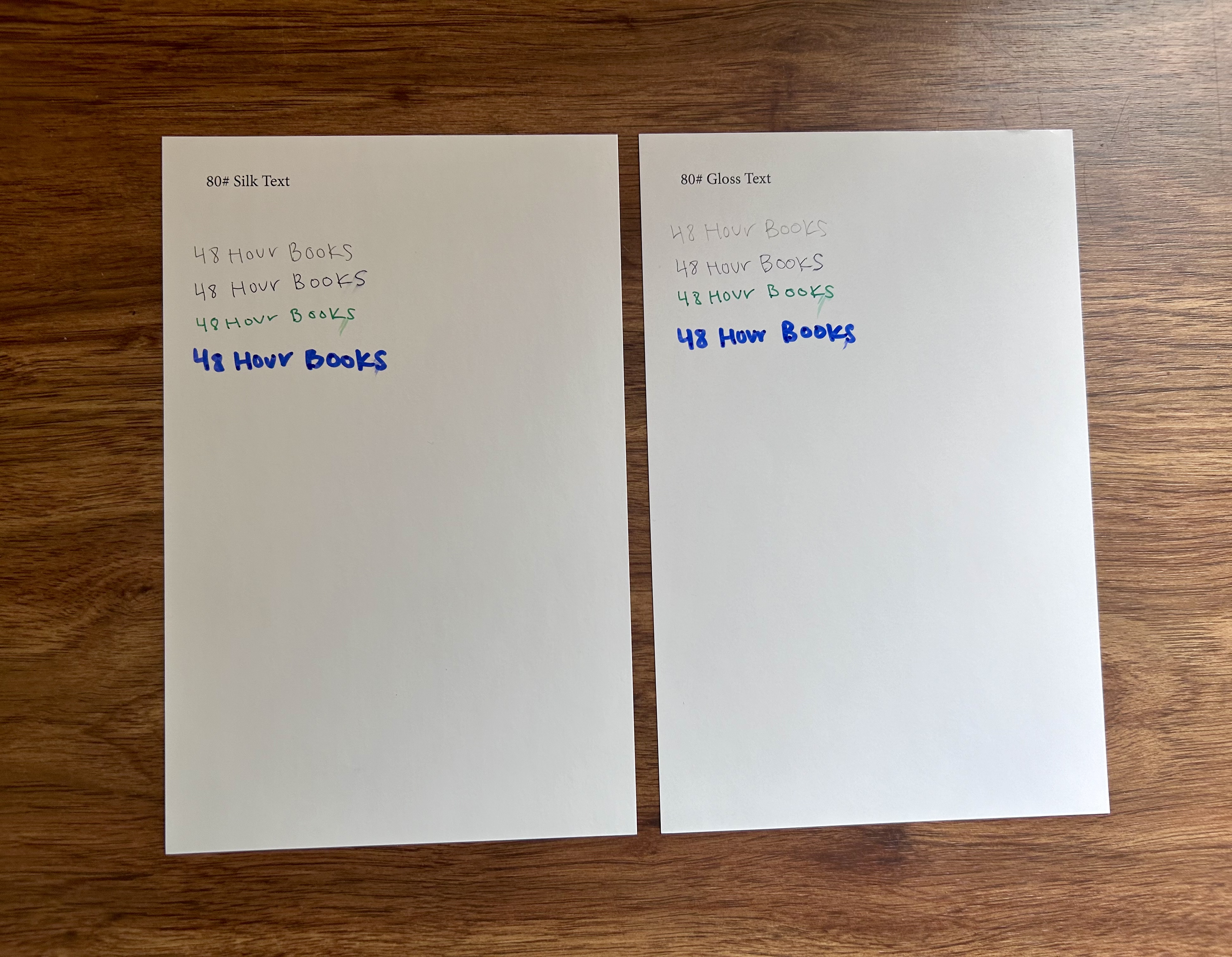
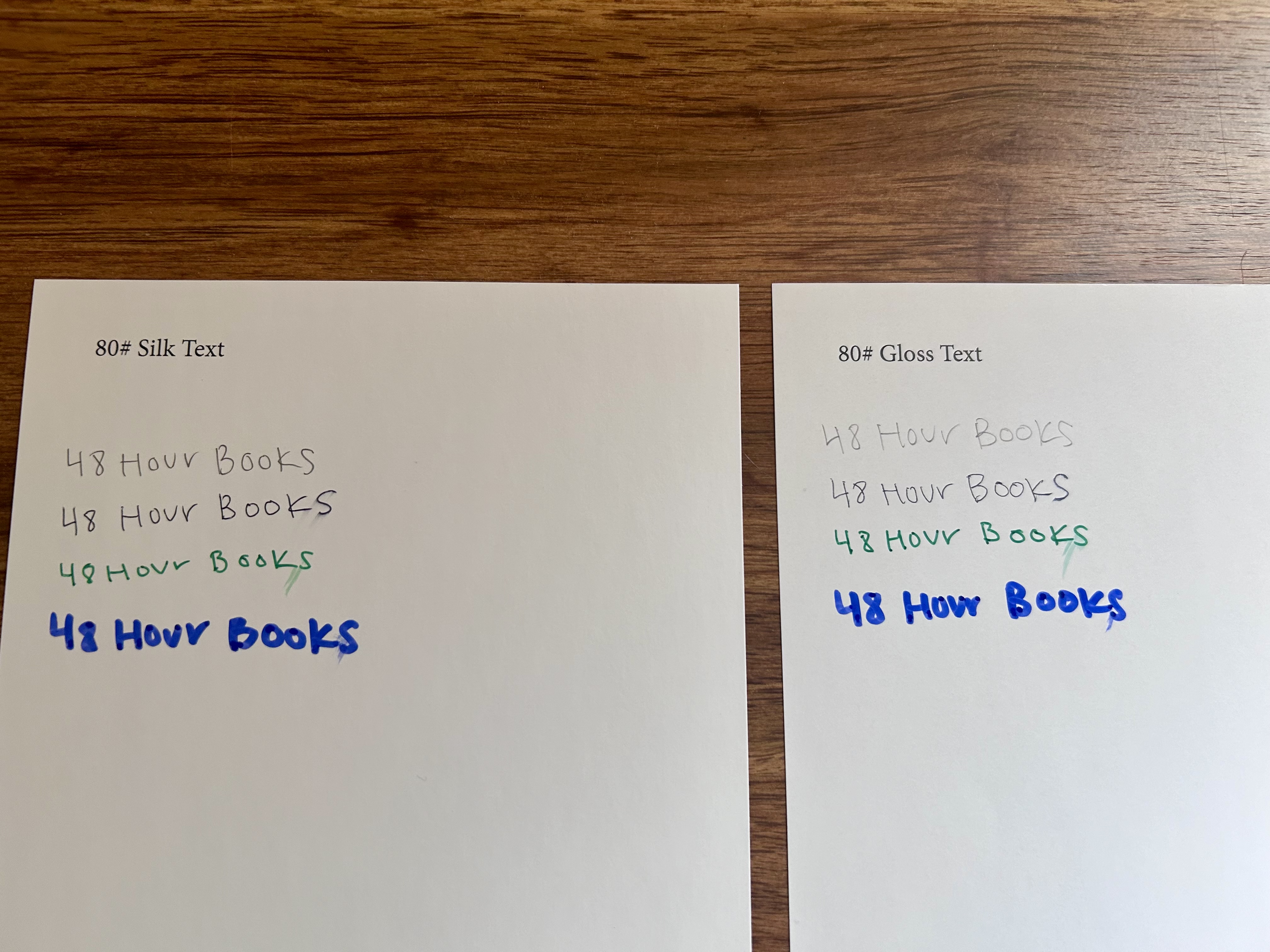
100# Silk & Gloss Text
For a children's book or a photo book with less than 50 pages, a 100# paper is ideal. This type of paper is sturdy and truly luxurious. A specialty coffee table book looks great using 100# stock.
The Utensil Test
The 100# paper stocks offered comparable results to the 80# coated paper stocks. Smudging was still a factor and using a pencil was even more difficult and appeared lighter than the 80# coated paper.
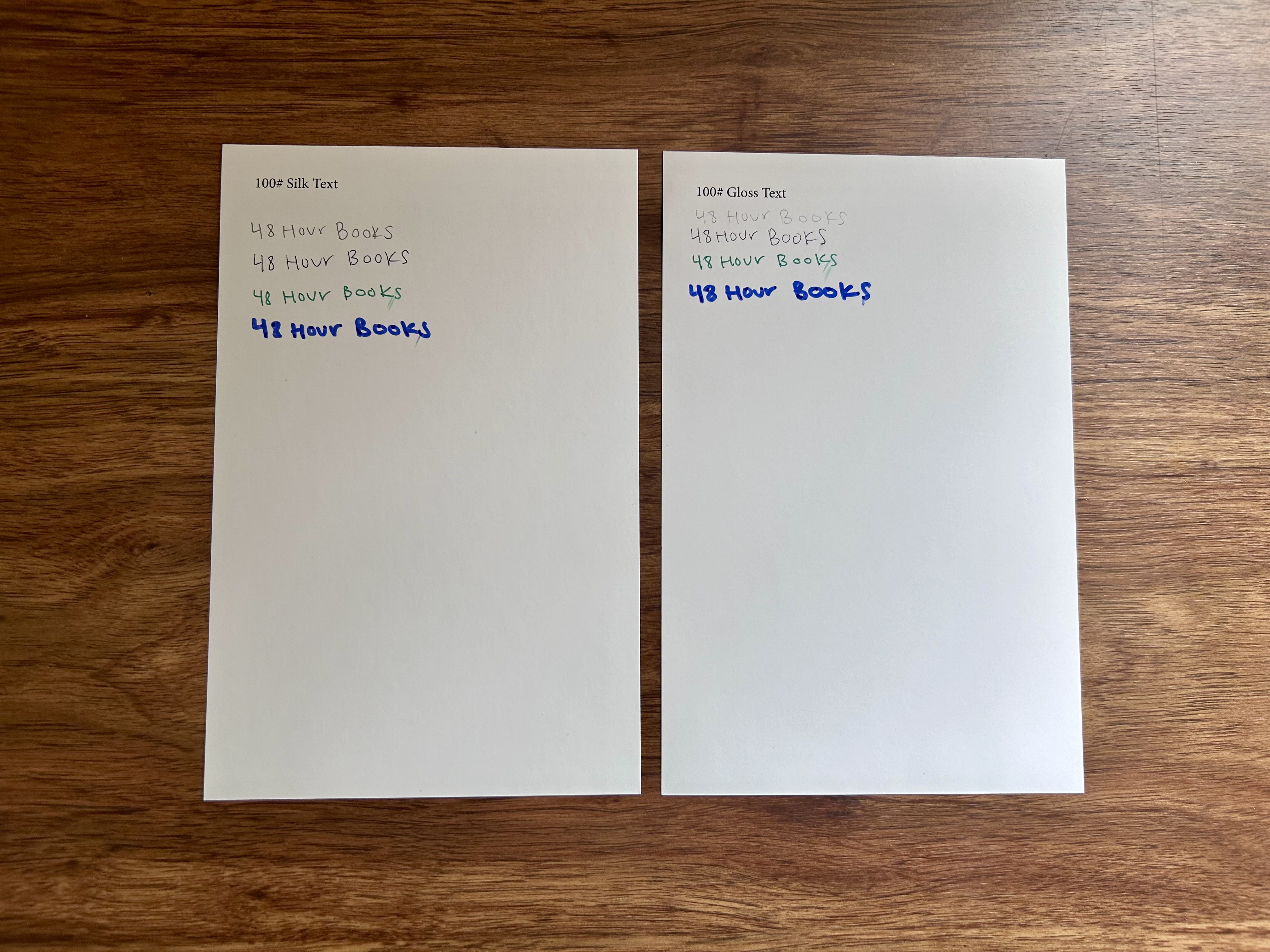
Takeaways
If you are looking to print your book with 48 Hour Books and still need help deciding on print materials, we recommend you order our free sample book: The Ultimate Guide to a 48 Hour Book. It contains samples of each paper and cover type we offer and provides a variety of information on our services and the self-publishing process.
Subscribe to the 48 Hour Books Newsletter for more self-publishing tricks and tips, author spotlights, notices about upcoming deals, and more!
Malika Bourne January 20, 2025
I love the fact that you did the utensil test. This is helpful to know what paper # to sue...now I need to find the pricing for a 32 page coloring book. Malika
48 Hr Books January 20, 2025
Hello! You can get instant pricing here: https://www.48hrbooks.com/self-publishing-cost#/steps/binding